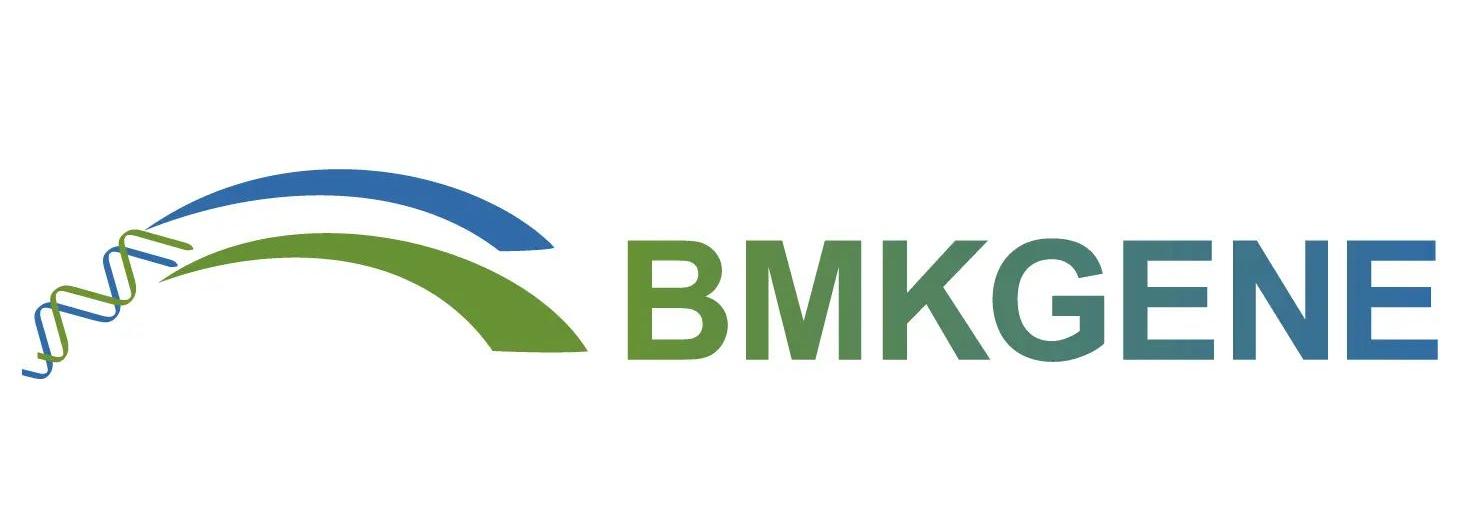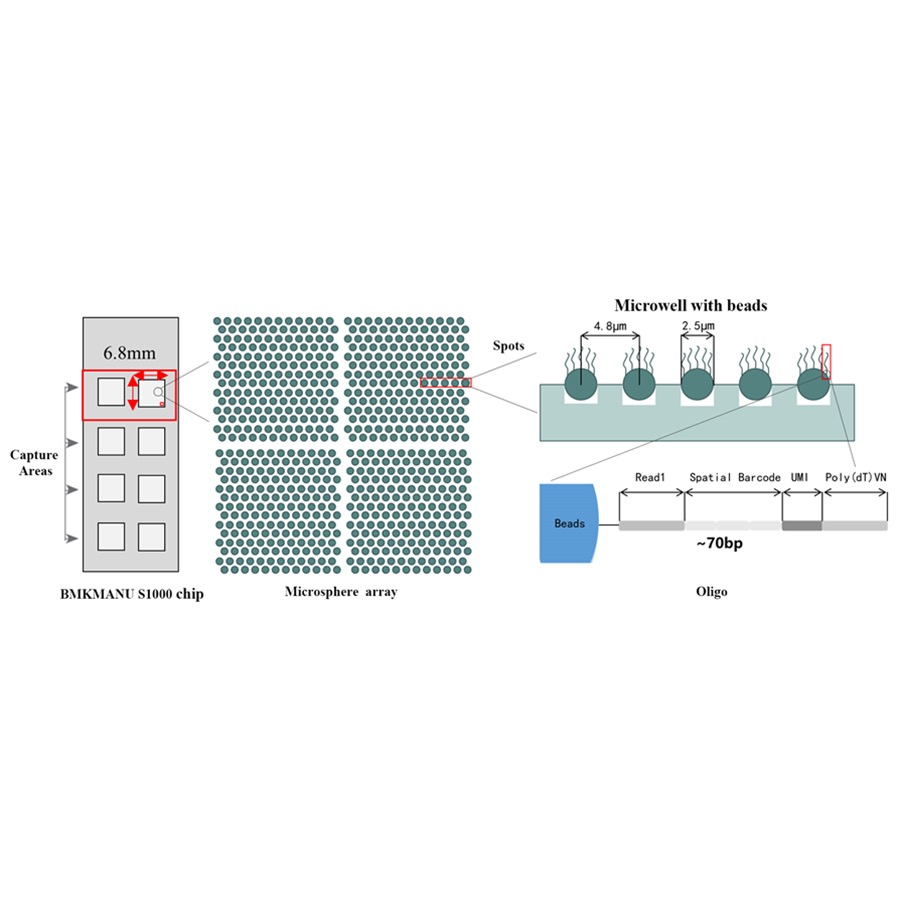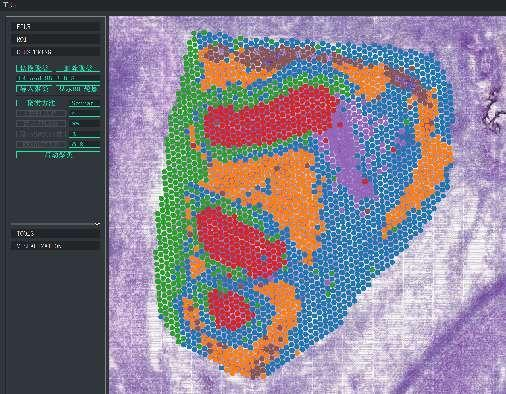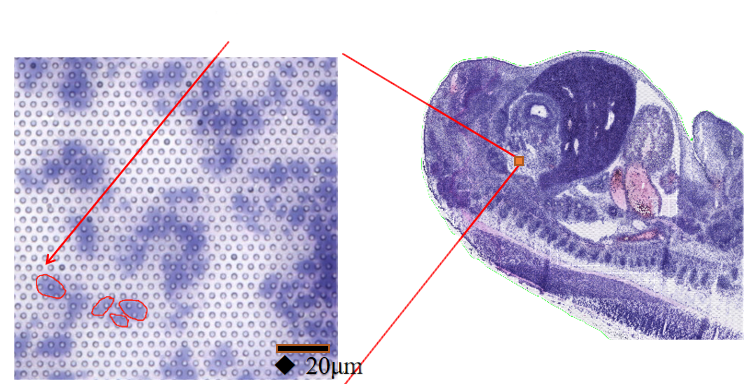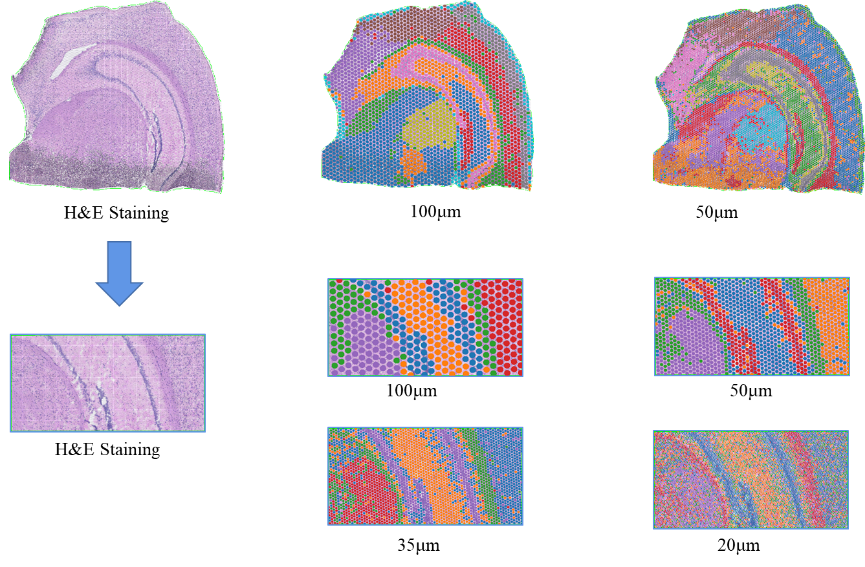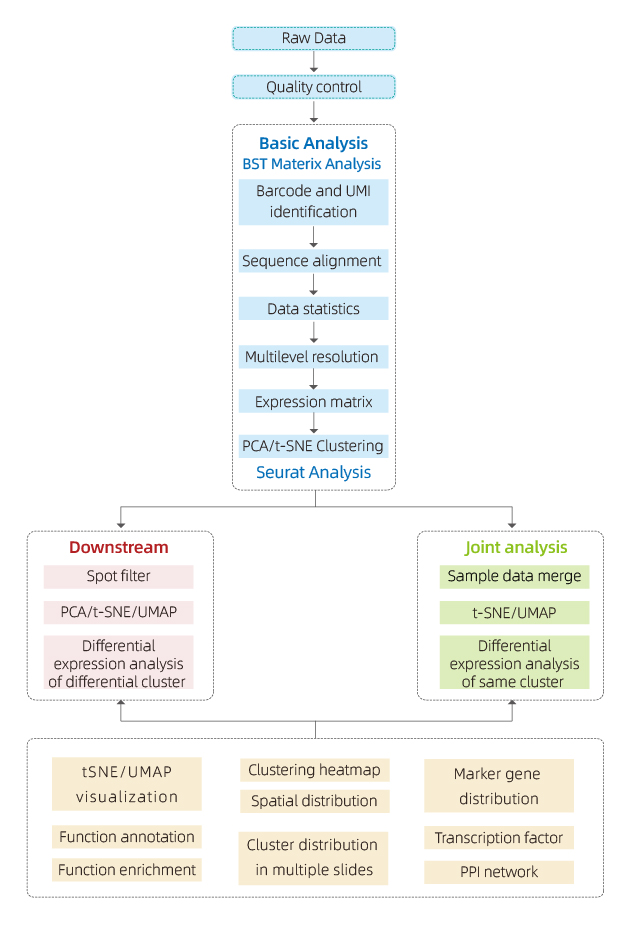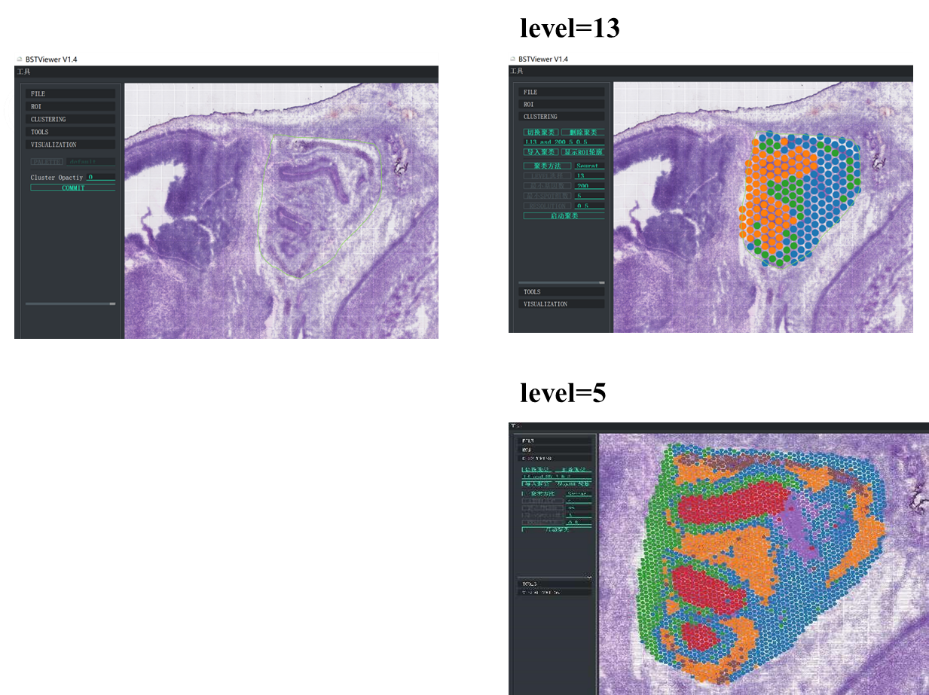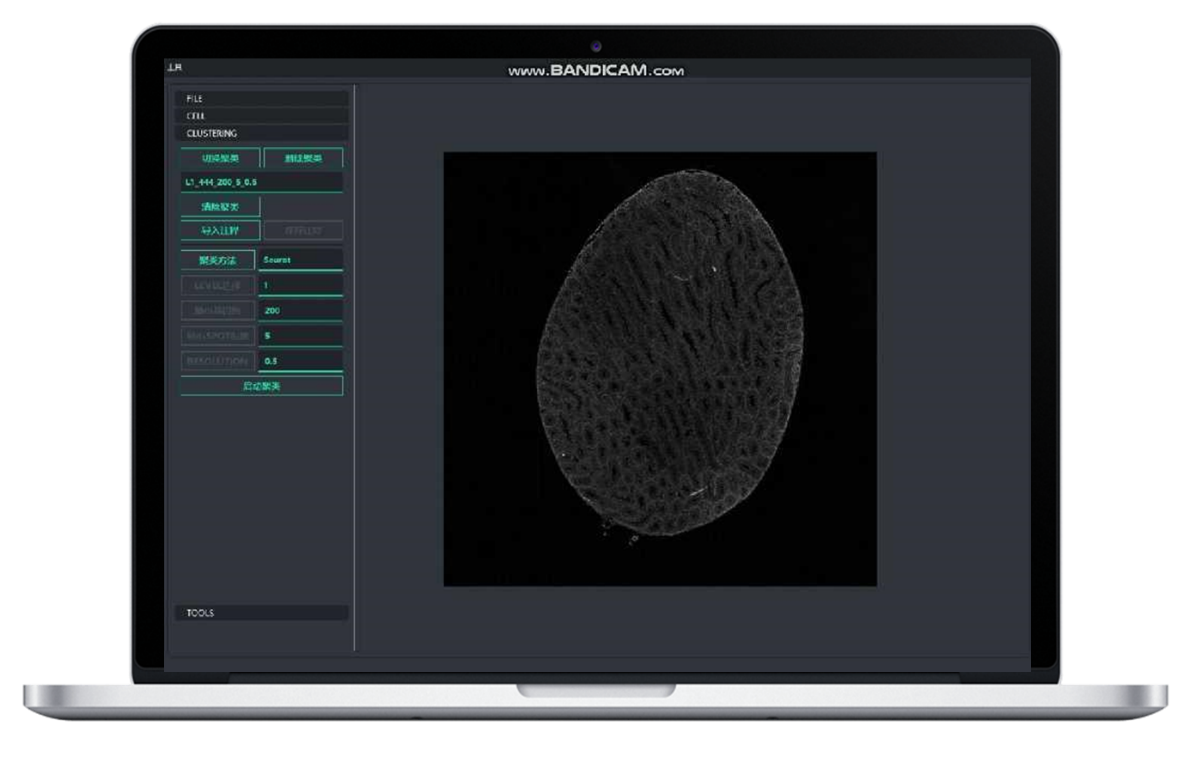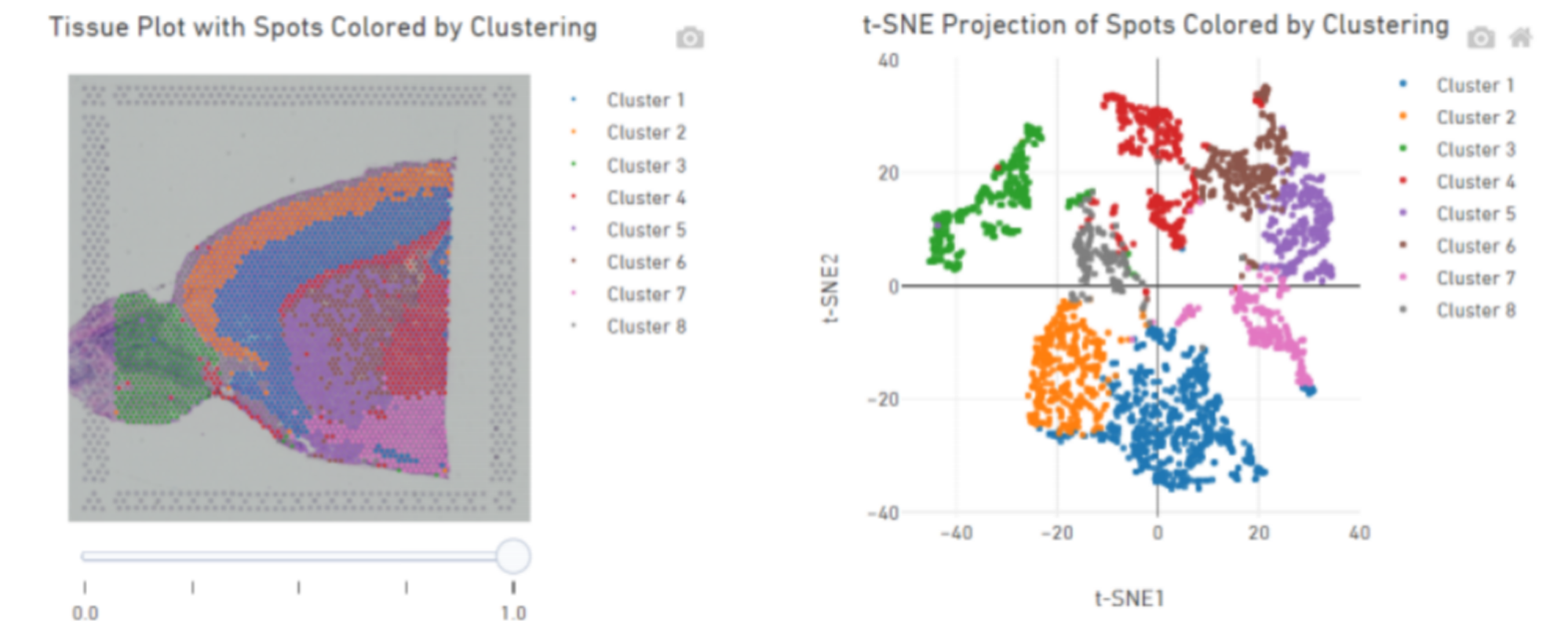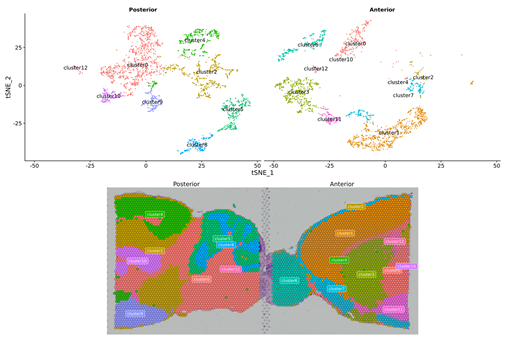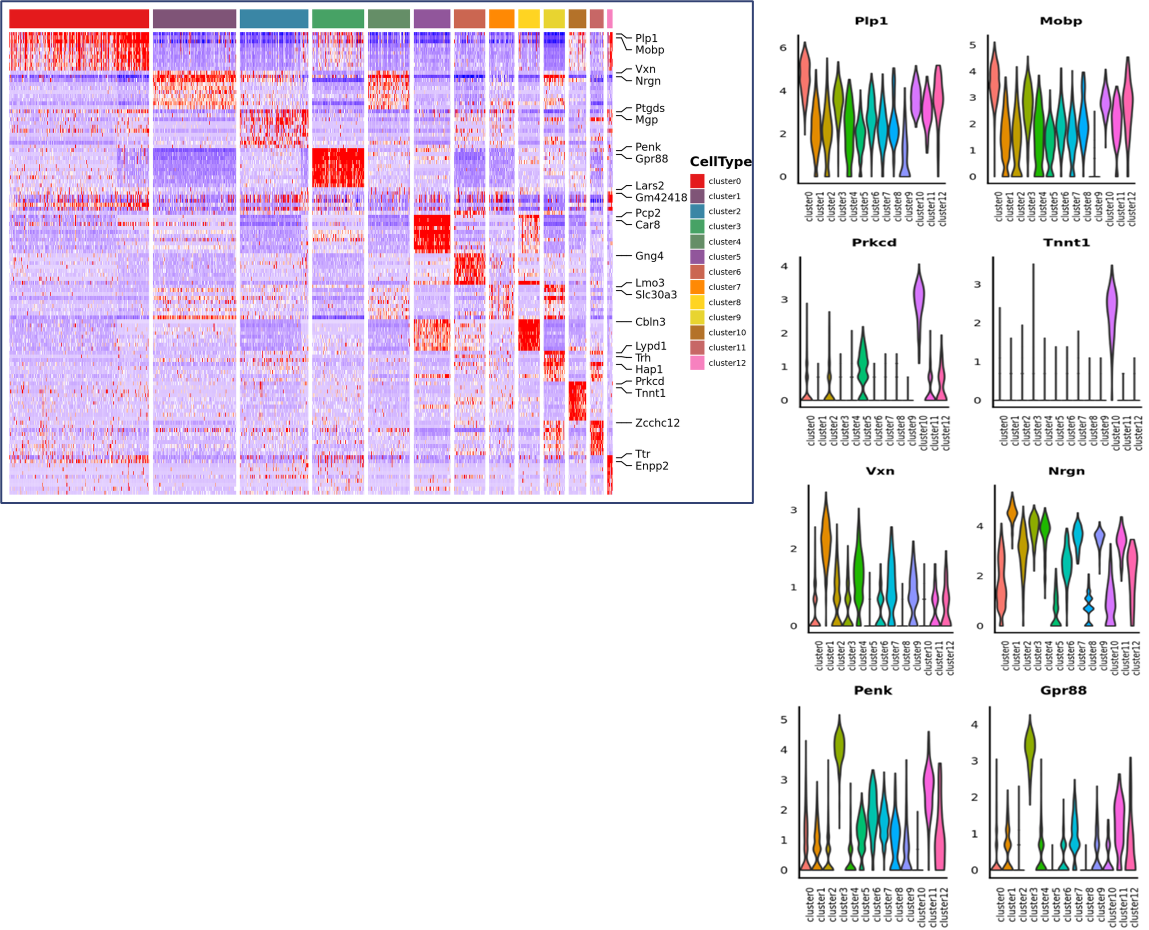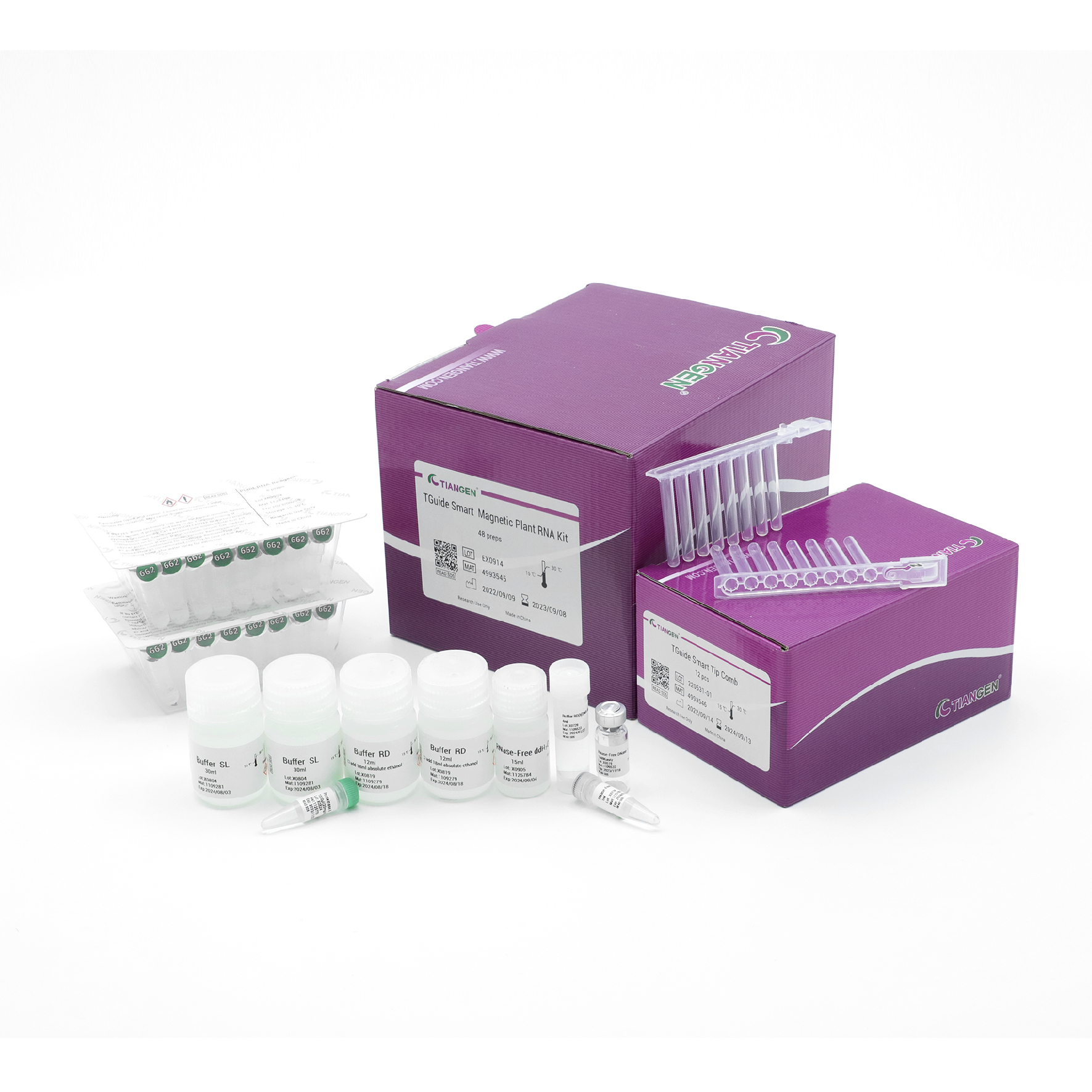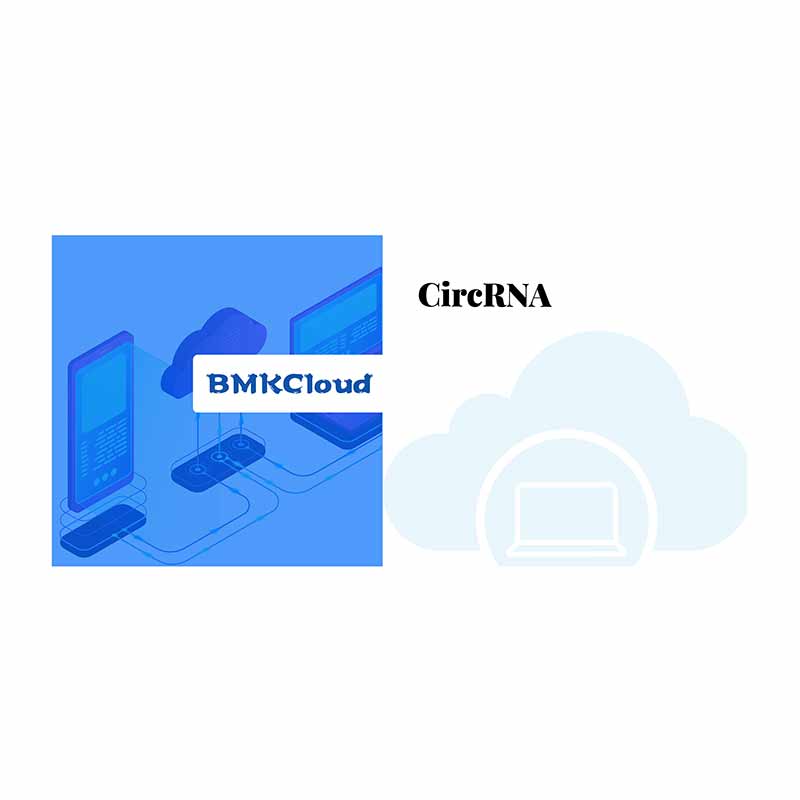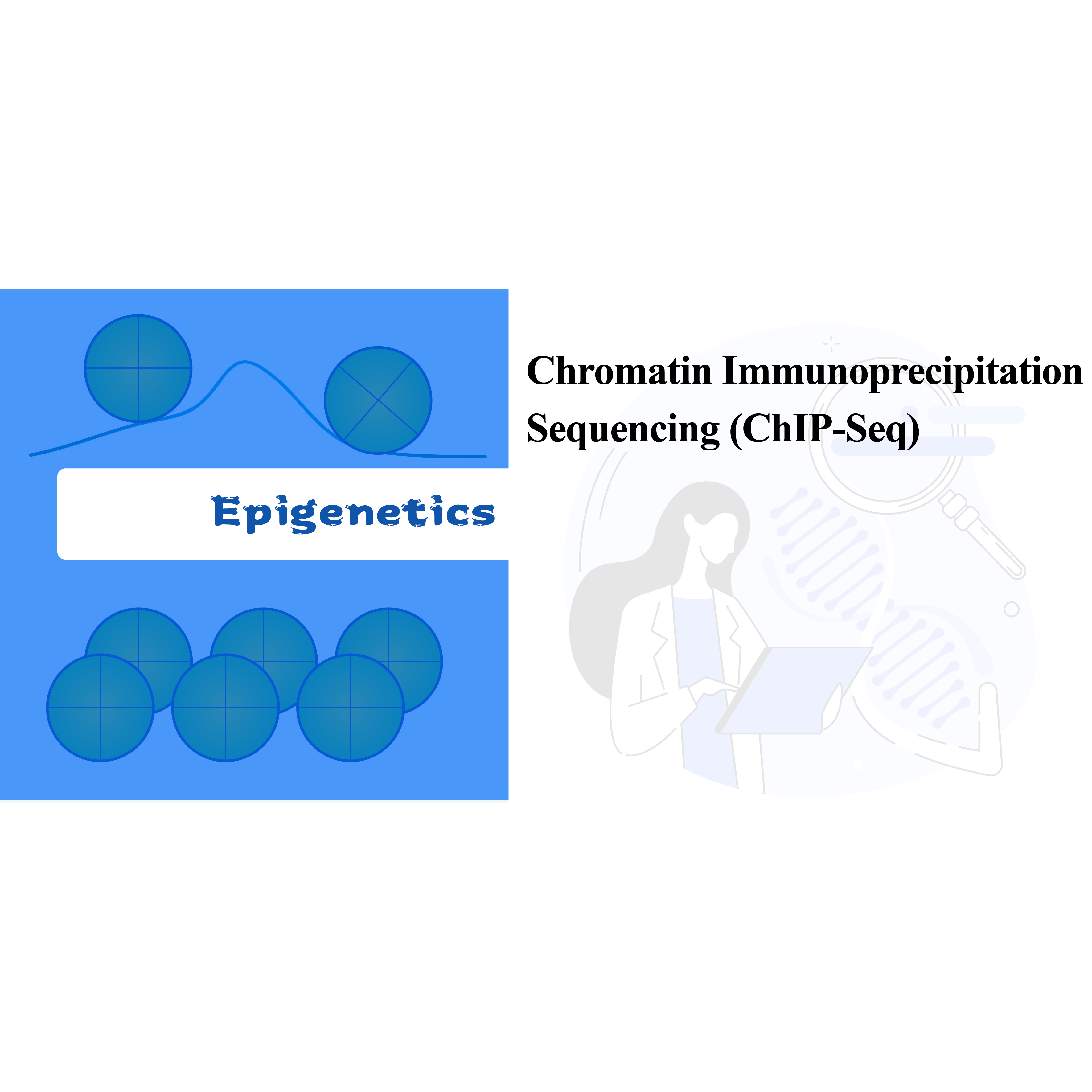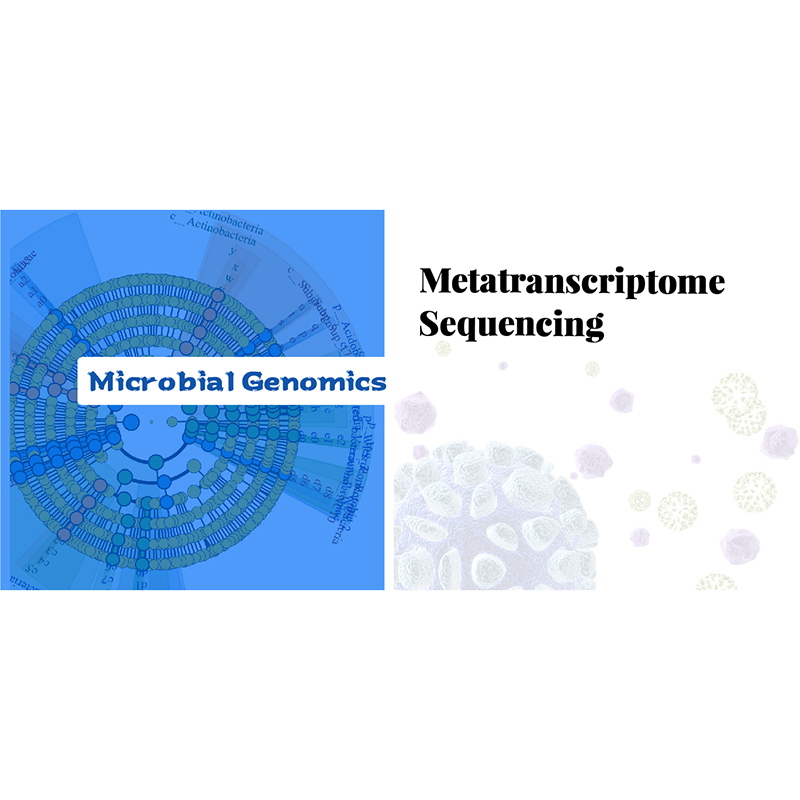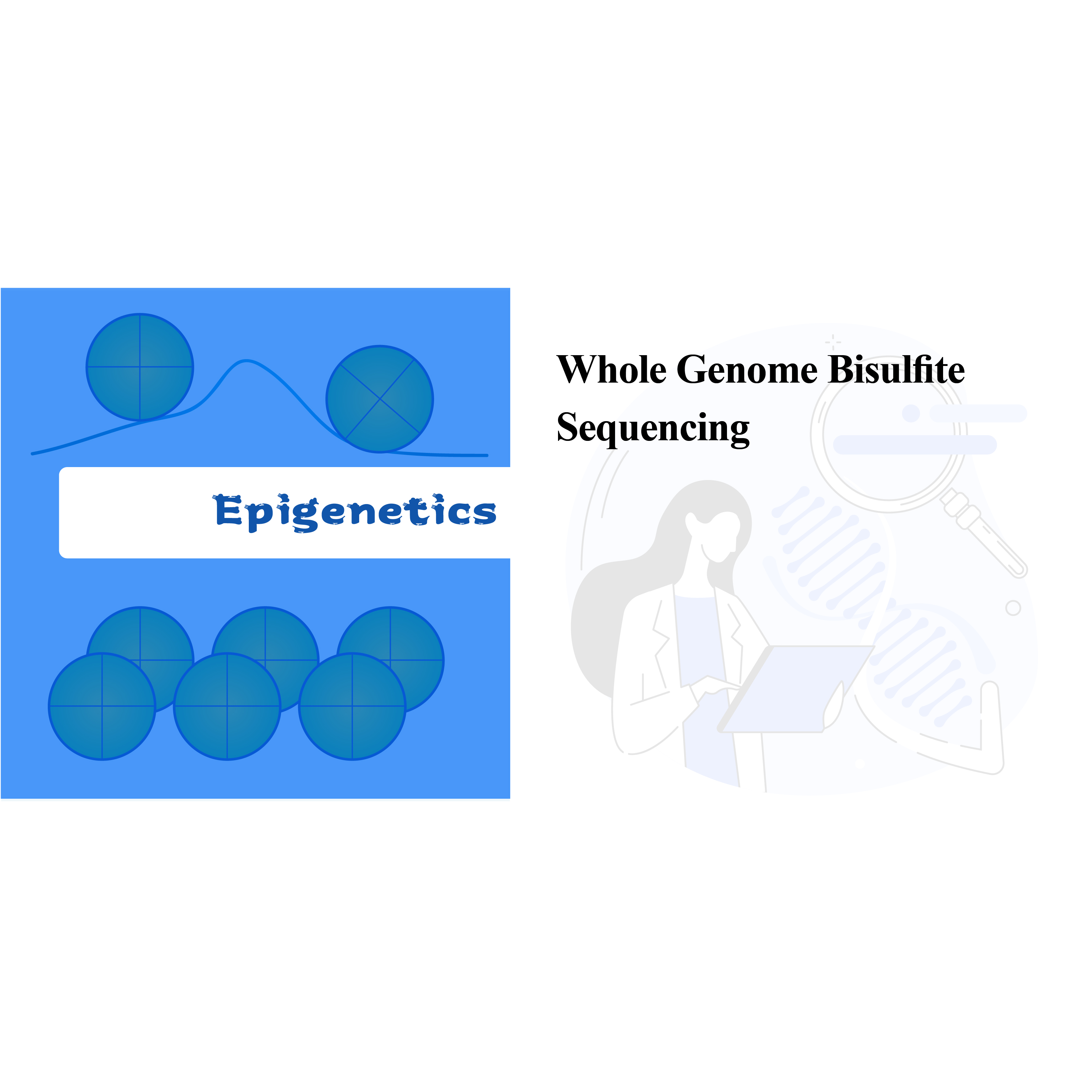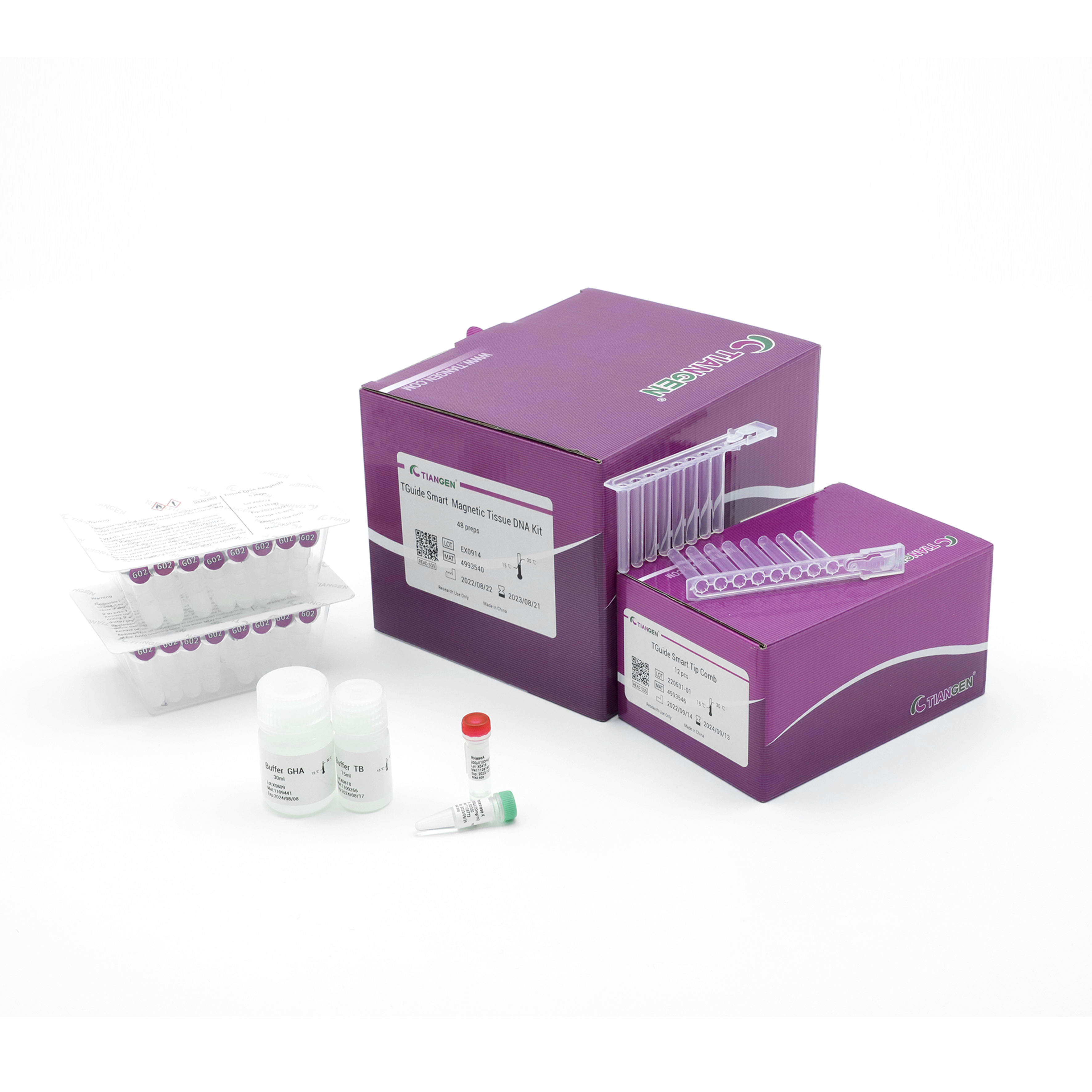
BMKMANU S1000 Spatial Transcriptome
BMKMANU S1000 Spatial Transcriptome Technical Scheme

Features
● Resolution: 5 µM
● Spot Diameter: 2.5 µM
● Number of spots: approximately 2 Million
● 3 possible capture area formats: 6.8 mm * 6.8 mm, 11 mm * 11 mm or 15 mm * 20 mm
● Each barcoded bead is loaded with primers composed of 4 sections:
poly(dT) tail for mRNA priming and cDNA synthesis
Unique Molecular Identifier (UMI) to correct amplification bias
Spatial barcode
Binding sequence of partial read 1 sequencing primer
● H&E and fluorescent staining of sections
● Possibility to use cell segmentation technology: integration of H&E staining, fluorescent staining, and RNA sequencing to determine the boundaries of each cell and correctly assign gene expression to each cell.
Advantages of BMKMANU S1000
● Sub-cellular Resolution: Each capture area contained >2 million spatial Barcoded Spots with a diameter of 2.5 µm and a spacing of 5 µm between spot centers, enabling spatial transcriptome analysis with sub-cellular resolution (5 µm).
● Multi-level Resolution Analysis: Flexible multi-level analysis ranging from 100 μm to 5 μm to resolve diverse tissue features at optimal resolution.
●Possibility to Use “Three in one slide” Cell Segmentation Technology: Combining fluorescence staining, H&E staining, and RNA sequencing on a single slide, our "three-in-one" analysis algorithm empowers the identification of cell boundaries for subsequent cell-based transcriptomics.
● Compatible with Multiple Sequencing Platforms: Both NGS and long-read sequencing available.
● Flexible Design of 1-8 Active Capture Area: The size of the capture area is flexible, being possible to use 3 formats (6.8 mm * 6.8 mm., 11 mm * 11 mm and 15 mm * 20 mm)
● One-stop Service: It integrates all experience and skill-based steps, including cryo-sectioning, staining, tissue optimization, spatial barcoding, library preparation, sequencing, and bioinformatics.
● Comprehensive Bioinformatics and User-friendly Visualization of Results: package includes 29 analyses and 100+ high-quality figures, combined with the use of inhouse developed software to visualize and customize cell splitting and spot clustering.
● Customized Data Analysis and Visualization: available for different research requests
● Highly-skilled Technical Team: with experience in over 250 tissue types and 100+ species including human, mouse, mammal, fish and plants.
● Real-time Updates on Entire Project: with full control of experimental progress.
● Optional Joint Analysis with Single-cell mRNA Sequencing
Service Specifications
|
Sample Requirements
|
Library |
Sequencing strategy
|
Data recommended |
Quality Control |
|
OCT-embedded cryo samples, 3 blocks per sample |
S1000 cDNA library |
Illumina PE150 (other platforms available) |
100K PE reads per 100 uM ( 60-150 Gb ) |
RIN>7 |
For more details on sample preparation guidance and service workflow, please feel free to talk to a BMKGENE expert
Service Work Flow
In the sample preparation phase, an initial bulk RNA extraction trial is performed to ensure a high-quality RNA can be obtained. In the tissue optimization stage the sections are stained and visualized and the permeabilization conditions for mRNA release from tissue are optimized. The optimized protocol is then applied during library construction, followed by sequencing and data analysis.
The complete service workflow involves real-time updates and client confirmations to maintain a responsive feedback loop, ensuring smooth project execution.
The data generated by BMKMANU S1000 is analysed using the software “BSTMatrix”, which is independently designed by BMKGENE, generating a Gene Expression Matrix. From there, a standard report is generated that includes data quality control, inner-sample analysis and inter-group analysis.
● Data Quality Control:
Data output and quality score distribution
Gene detection per spot
Tissue coverage
● Inner-sample analysis:
Gene richness
Spot clustering, including reduced dimension analysis
Differential expression analysis between clusters: identification of marker genes
Functional annotation and enrichment of marker genes
● Inter-group analysis:
Re-combination of spots from both samples (eg. diseased and control) and re-cluster
Identification of marker genes for each cluster
Functional annotation and enrichment of marker genes
Differential Expression of the same cluster between groups
Additionally, BMKGENE developed “BSTViewer” is a user-friendly tool that enables the user to visualize the gene expression and spot clustering at different resolutions.
BMKGene developed software for user friendly visualization
BSTViewer spot clustering at multi-level resolution
BSTCellViewer: automatic and manual cell splitting
Inner-sample Analysis
Spot clustering:
Marker genes identification and spatial distribution:
Inter-group Analysis
Data combination from both groups and re-cluster:
Marker genes of new clusters:
Explore the advancements facilitated by BMKGene’s spatial transcriptomics services with the BMKManu S1000 technology in this featured publication:
Song, X. et al. (2023) ‘Spatial transcriptomics reveals light-induced chlorenchyma cells involved in promoting shoot regeneration in tomato callus’, Proceedings of the National Academy of Sciences of the United States of America, 120(38), p. e2310163120. doi: 10.1073/pnas.2310163120
You, Y. et al. (2023) ‘Systematic comparison of sequencing-based spatial transcriptomic methods’, bioRxiv, p. 2023.12.03.569744. doi: 10.1101/2023.12.03.569744.
